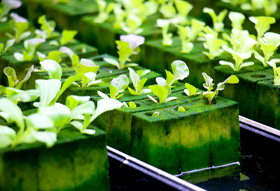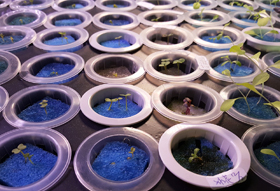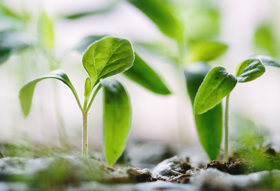
Foam in the News - Using foam to solve hunger

There are many excellent ways in which foam is used for positive social purposes and environmental benefits. This seems strange to say, but in fact, recent media exposure is shining light on these unusual applications of the material. Its versatility extends beyond its use in various products as foam is incredibly versatile in the type of benefits it can bring. In the case of a recent news article and video from BBC News, foam is now being used by many communities around the world as an alternative farming method.
At eFoam, and indeed the wider industry, we talk about foam sustainability and its environmental impact. Much of the industry is heavily focused on reducing wastage, increasing rates of recycling and repurposing offcuts into new products. However, new innovations are exploring new possibilities for giving foam components a new lease of life. Notably, it is the material qualities of foam that make it a suitable material for a range of unusual applications, such as the growth of produce in harsh environments. We’re at the very start of our environmental and sustainable initiatives, but the recent news story covering the use of foam mattresses in Jordan shows much promise.

Unfavourable soil conditions in Jordan - notably in desert environments - are paving way for foam ‘gardens’. Tony Ryan, chemistry professor at the University of Sheffield, began studying how things could be grown in foam as part of his PhD. Upon working at a refugee camp in Jordan, he soon recognised there was no logical or environmentally friendly way to dispose of the hundreds of the used foam mattresses piling up. The composition of foam enables the creation of any possible environment in terms of temperature and moistness, and by successfully using it to hold a plant and/or seed in place by its dense structure, all that is then left is the addition of water. In fact, as the water is not draining away, growing produce using foam only uses 20% of the water typically used to grow crops.
The idea is based on the principle of hydroponics, whereby plants are grown without soil and mineral nutrients are sourced in a water solvent. By placing a small cut out of foam in an old cup or pot, the perfect growing environment is perfectly formed. Mayor Al-Anani from the University of Sheffield is pioneering the programme on the ground, teaching residents of the Zaatari refugee camp the basics of hydroponics. More than 1000 people at the camp have been taught this technique at the camp and it is growing significantly in popularity. Those who have attended a training session are supplied with a ‘starter kit’ to take home.

A simple innovation has already encouraged many positive benefits to the mental health of the local residents, with many elderly people who were once into gardening praising how they can now return to their favourite past time. Bringing a sense of hope and home to people displaced, we’re pleased to see how a simple foam invention has made an impactful difference.
To learn more about our environmental and sustainability efforts, feel free to contact us.

